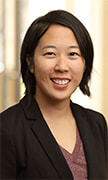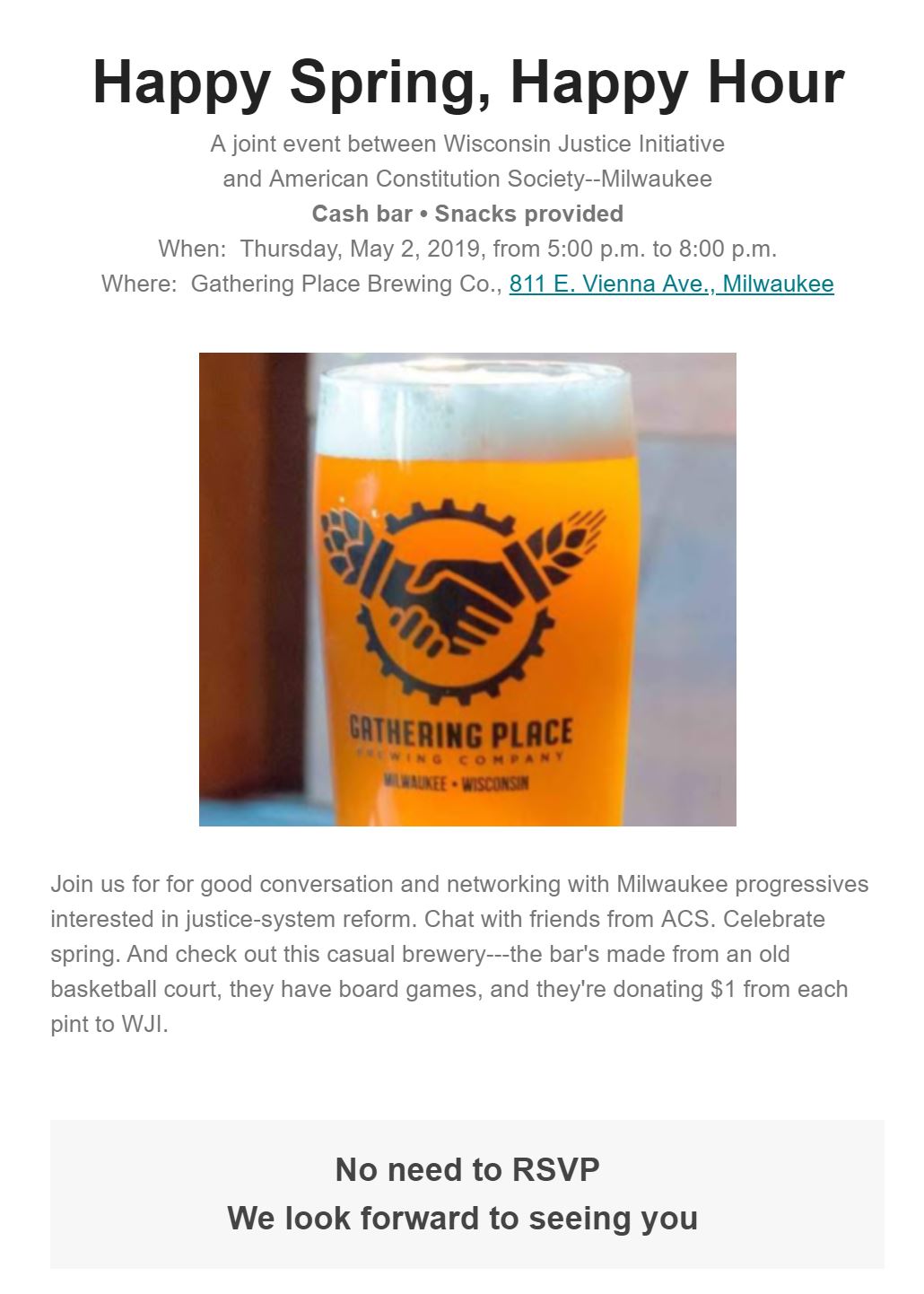|
By Alexandria Staubach An employer wants him, he has the skills to do the job, and he passed the required courses and test required for a mortgage-lending-originator license. Yet he is barred from obtaining that license—and related employment and career—because of felony convictions for conduct unrelated to the financial industry or matters of trust. “Collateral consequences” are the various restrictions that affect people convicted of crime even after they have served their sentences. Such restrictions can impact access to employment, licensing, and housing, and myriad other things. They may not directly relate to the crime of conviction, and they can apply without consideration of the person’s rehabilitation or risk. The struggle to find employment after a felony conviction is well documented and studied. A September 2023 report conducted by the Internal Revenue Service states “that (criminal) records may be preventing about one third of working-age males from contributing to the formal economy.” The same study found negative effects on employment prospects “even in cases where charges did not lead to convictions.” WJI recently sat down with a formerly incarcerated person who is putting in serious work to obtain gainful employment, to discuss the roadblocks he has faced in a system that just won’t get out of his way.  Stuart Parker Arthur Stuart Parker Arthur Stuart Parker Arthur, 26, grew up in south central Wisconsin. When he was in his late teens, he relocated to Missouri to work for his biological father in his business. Shortly after Arthur arrived, he threw a large party. Arthur was young. The police came. The police found drugs. The police found a gun. According to Arthur, the drugs were trace quantities of cocaine and the gun was disassembled. Missouri court records indicate that on Jan. 26, 2019, Arthur was charged with possession of a controlled substance other than marijuana, a Class D felony, and unlawful use of a weapon, a Class E felony. Missouri felonies are graded on an A-E scale, with Class E felonies carrying the least significant penalties. Arthur told WJI he felt his best option was to take a plea deal that avoided a prison sentence because his then-fiancée was pregnant with their first child. Court records indicate that Arthur pleaded guilty to the two charges on July 25, 2019, and received a suspended sentence, meaning the charges would ultimately be dismissed if he successfully completed five years of supervised probation. Arthur told WJI that his fiancée suffered from a drug addiction and in the winter of 2020, after the birth of their child, she overdosed in a hotel room on a combination of drugs including fentanyl and heroin. “It happens a lot more than people think,” said Arthur. Arthur said he went to the hotel room with his infant child and met with police. The overdose was fatal. Initially, Arthur was not charged with any crime. Court records do not reflect any probation violations, either. Six months later, on June 27, 2020, Arthur was charged with endangering the welfare of a child involving drugs, as a result of bringing his child to the scene of his fiancée’s drug overdose. “I had completed drug rehabilitation” pursuant to his supervised probation, said Arthur. “I voluntarily went to inpatient treatment to deal with potential relapse from the grief,” he told WJI. Consistent with the new charges, court records of July 15, 2020, reflect the first violation of probation filed in his original case. Nearly two years later, on May 2, 2022, Arthur pleaded guilty to the child endangerment charge, again feeling the pressure of having a child on the way and hoping to avoid a lengthy prison sentence. On the new charges, Arthur was sentenced to 120 days of inpatient treatment while incarcerated and two years of supervised probation that included random blood, breath, and urine testing, despite any indication that ongoing drug use was an issue. Court records reflect no subsequent probation violations, and he was discharged from probation on the child endangerment charge as of May 28, 2024. However, as a result of the second offense, his earlier drug and gun possession suspended sentence was revoked and a new sentence was imposed. He served 120 days of additional incarceration and was sentenced to another five years of supervised probation. Supervision on the drug and firearm case will terminate in August 2027, though they could terminate as early as winter of 2025 with time credits for good behavior, said Arthur. Arthur told WJI he has otherwise met the obligations of his sentence. Following release, Arthur relocated to Wisconsin, where his mother lives. Among other stipulations, Arthur was required to obtain housing and employment. He initially found work as a car salesman. But he was unable to find housing (look for part 2 on the housing issue). Because he could not find housing, Arthur reached out to a mortgage lender with the hope of eventually purchasing a home. In the process, he discovered he was good at deciphering what he needed to qualify and what rates and programs would be available to him. “I had done my homework,” Arthur said. Sue Foley, Arthur’s mortgage lender, also thought he had a knack for the work. She remains “impressed by his efforts to turn his life around.” “His credit score is in the 700’s, he owns a home” Foley told WJI. Foley encouraged Arthur to come work for her at Nations Lending, even though they had never hired anyone with a felony conviction. She believed he could be licensed in Wisconsin if they could get him through her company and its attorneys. In Wisconsin, the license for a mortgage loan originator is obtained through the Department of Financial Institutions (DFI). According to the Nationwide Multistate Licensing System (NMLS), the license is required of anyone who takes or negotiates the terms of a residential mortgage loan. According to NMLS, the license requires completion of 20 hours of precertification training and passage of a test. Wisconsin law further requires that "(a)n applicant shall not have been convicted of, or pled guilty or no contest to, a felony in a domestic, foreign, or military court during the 7-year period preceding the date of the application or, for a felony involving an act of fraud, dishonesty, breach of trust, or money laundering, at any time preceding the date of the application. This paragraph does not apply with respect to any conviction for which the applicant has received a pardon." However, the Wisconsin Fair Employment Act (WFEA) prohibits discrimination against individuals and “certain licensed activities” on 14 protected traits, including records of arrest or conviction. Storm Larson, a Madison based employment attorney, wrote in an article in Wisconsin Lawyer that employers and licensors have “leeway to consider an employee’s record of conviction” and “the general rule is that conviction records cannot be considered in making an employment decision unless ‘the circumstances of the [the conviction] substantially relate to the circumstances of the particular job or licensed activity’” (emphasis in original). The Wisconsin Supreme Court in a 2022 decision muddied the waters and caused employer and licensors to deploy a “fact-intensive inquiry into the circumstances of the job and conviction itself,” wrote Larson. Now, “the supreme court specifically notes that the length of time between the conviction and the application for employment can be relevant to determining the likelihood of recidivism,” he wrote. Previously that was not a factor. Despite the law and the costs, Arthur completed the necessary course work and testing to obtain his license. He applied at Nations Lending and was hired by the firm. When Arthur submitted his license application to DFI, Nations Landing backed him. Arthur supplied additional letters of support from his employers at two car dealerships. Foley told WJI that Arthur even obtained a letter of support from the warden of the Missouri prison where he had been incarcerated. Nevertheless, DFI rejected Arthur’s license application because of his felony convictions. DFI wrote that its legal staff had reviewed case law about the WFEA and that the law governing licensure for mortgage loan originators “does not give the Division discretion to consider those facts and circumstances, unless the crimes have been expunged or pardoned or are older than seven years.” “(E)ven if the Division could consider those facts and circumstances for these offenses, it would not find licensure appropriate at this point given the recency of the offenses. Your subsequent life changes are more consistent with holding a position of financial trust, but establishing a longer post-offense track record is required to provide adequate assurance that the applicant meets the requirements for licensure,” DFI wrote. Arthur attempted to dispute DFI’s decision, but there is no formal appeal process under Wisconsin law. Ultimately, on May 29, 2024, Arthur withdrew his application so it would not later show up as a denial. “They’re making me give up a job that that I am good at, a job that could give me a better life,” Arthur told WJI. “There are people who want something better when they get out of prison,” said Foley. “We shouldn’t throw away the baby with the bath water.” WJI reached out to DFI and spoke with the agency’s Chief Legal Counsel, Matthew Lynch. Lynch said DFI has no official position and that the agency cannot comment on specific cases. Lynch acknowledged the tension between state licensing requirements and WFEA. Lynch told WJI that in his analysis, federal law drove Wisocnsin’s adoption of the statue governing mortgage lending and sets minimum requirements, including the provision requiring seven years between conviction and licensure. According to Lynch, states that run afoul of the federal standards would be subject to federal intervention and control over licensing in the area. Lynch said the “agency would be happy to take another direction but it would likely run afoul of federal law.” Lynch further told WJI that his analysis of the legislative intent behind the mortgage lender licensing statue also drives their decision making. In 2013 the Legislature added language to the mortgage licensing statue that permits them to use the discretion described in WFEA for convictions that have been expunged or pardoned, Lynch said. The 2013 addition “can’t make sense” if the agency had the ability to use the mitigation factors under WFEA in every case, he said.
0 Comments
By Alexandria Staubach
For the past decade, one individual has screened all judicial complaints in Wisconsin. He is equipped with unilateral authority to determine what complaints merit further investigation. Whether initiated by a litigant, member of the press, or other interested party, a complaint about a judge goes to the Wisconsin Judicial Commission as an “initial inquiry.” According to the commission’s most recent annual report, in 2023, there were 644 reports of judicial misconduct or disability. Most of these inquiries were resolved solely by the commission’s staff, which includes the commission’s executive director and a paralegal. Attorney Jeremiah C. Van Hecke has served as executive director since 2013. “Commission staff reviews all allegations against judicial officials to determine whether they are within the jurisdiction of the Commission and are not patently frivolous or unfounded. Allegations that do not meet these criteria may be administratively dismissed by the Commission’s Executive Director with an appropriate referral, when possible,” says the 2023 report. Of the 644 initial inquiries in 2023, all but 42 resulted in dismissal by staff. Wisconsin law does not provide a mechanism for appeal of such dismissals. According to the 2023 report, “a sample” of the dismissed inquiries are reviewed by the commission’s screening committee. In an email, Van Hecke verified to WJI that “there is not an appeals process regarding the dismissal of an initial inquiry made to the Commission,” and “(o)nce a year, the Commission's chair appoints Commission members to the Screening Committee, which reviews a random sample of decisions made by Commission staff regarding initial inquiries for appropriateness and consistency.” According to Van Hecke, “initial inquiries include, but are not limited to, complaints of judicial misconduct filed with the Commission. They could also include initial substantive contacts that do not result in the actual filing of a complaint." He added that “(t)o the extent that initial inquiries amount to a complaint against a judicial official,” dismissal decisions regarding those inquiries are primarily made” by him as executive director, though on occasion some are addressed by the Screening Committee. All Wisconsin judges, from the Supreme Court to former judges who serve in a reserve capacity and municipal judges, are subject to the Code of Judicial Conduct. Since 1978, the commission has existed as an independent agency within the judicial branch to oversee adherence to that code. Court commissioners also came under the commission’s jurisdiction in 1992. The Judicial Commission consists of nine members: one circuit court judge, one court of appeals judge, and two attorneys, all appointed by the Supreme Court, plus five nonlawyer members nominated by the governor and appointed with the Senate’s consent. Initial inquiries are confidential by law unless the judge who is the subject of a complaint waives confidentiality. Under Wisconsin law, if an individual or entity “breached the confidentiality of the investigation, the commission may dismiss the allegation, admonish the person or take other action.” Last year, former state courts’ director Randy Koschnick made national headlines after going public with a complaint he filed against four Wisconsin Supreme Court justices, including then-newly elected Justice Janet Protasiewicz, related to his firing. Three of the justices wrote a letter to the commission accusing Koschnick of a publicity stunt and criticized the commission for failing to admonish Koschnick for going public. So what happens to initial inquires that survive Van Hecke’s screening? The commission opens an investigation and requests more information from the judge or others. The executive director then prepares a report for the commission to consider. The complaint can be dismissed at that point, too, based on what the inquiry shows, whether the complaint involves a disappointed litigant questioning the merits of a judge's decision, whether the allegation involves a single and minor violation, or whether the judicial official has already taken corrective action or no longer holds office. Of the 42 cases that survived Van Hecke’s screening in 2023, 33 were dismissed after preliminary investigation. If the commission decides the matter should continue after preliminary investigation, the judge is notified and permitted to respond. The commission may then dismiss the complaint or initiate a public disciplinary action in the Wisconsin Supreme Court. In the public disciplinary action the commission presents its case to a three-judge panel (including at least two appeals court judges), and the panel reports its conclusions and recommendations to the Supreme Court for final decision. Since 1978, only 34 complaints have resulted in public disciplinary cases. Just two public disciplinary cases have occurred in the last five years. Prior to his appointment as Judicial Commission executive director in 2013, Van Hecke was a Milwaukee County assistant district attorney. By Alexandria Staubach
Leaders from a coalition of Wisconsin anti-abortion advocacy organizations are calling on Milwaukee County District Attorney John Chisholm and Dane County District Attorney Ismael Ozanne to prosecute abortions. The activists held a press conference on Tuesday. Planned Parenthood of Wisconsin resumed abortion services in Milwaukee and Dane counties on Sept. 18 after a 15-month hiatus. Services resumed following a July ruling from Dane County Circuit Court Judge Diane Schlipper. Schlipper ruled in a case filed by Attorney General Josh Kaul seeking to repeal Wisconsin’s 1849 abortion ban. In denying a motion to dismiss by Sheboygan County District Attorney Joel Urmanski, Schlipper said the 1849 ban does not use the word “abortion” and therefore does not apply to medical abortions. Rather, the 1849 ban only prohibits attacks on women to terminate pregnancy. No final ruling has been made in the case, nor has an injunction on the 1849 abortion ban been issued, causing some legal confusion. The case is ultimately expected to end up before the Wisconsin Supreme Court. Representatives from Wisconsin Right to Life, Wisconsin Family Action and Pro-Life Wisconsin convened at the State Capitol to call out Chisholm and Ozanne for not bringing charges against Planned Parenthood one week and one day after services resumed. “Planned Parenthood is perpetrating this crime and they should be held accountable,” said Matt Sande, legislative and deputy state director for Pro-Life Wisconsin. Although no one stated how or that they knew abortions were actively taking place at either Planned Parenthood facility, Dan Miller, state director of Pro-Life Wisconsin, said “sidewalk counselors” present at both the Dane County and Milwaukee County Planned Parenthood clinics observed approximately 10 women go in for services daily since the June 2022 Dobbs decision and that this number was up to 25 per day at both facilities after Planned Parenthood announced it would resume abortion services last week. “If district attorneys pick and choose what law they enforce, where will that end," asked Julaine Appling, president of Wisconsin Family Action. When asked whether non-enforcement was simply a matter of ordinary prosecutorial discretion, she responded “prosecutorial discretion usually is very quiet.” All agreed they had not spoken with either district attorney. Recent Marquette Law School polls reflect voters’ contradictory positions on safety and crime.
Although 77% of respondents report feeling personally safe from crime when going about their daily activities, an even larger percentage of respondents nevertheless cite crime as a top concern and want increased police funding. In the latest poll results, a whopping 85% of respondents are either “very concerned” or “somewhat concerned” about crime. Indeed, 57% of respondents said they are “very concerned” about crime. Only 14% reported little or no concern about crime. Among those polled, crime ranks third overall among nine issues of concern, behind inflation and public schools. With respondents sorted by political affiliation, 79% of Republicans and 55% of independents are very concerned about crime, but only 37% of Democrats are very concerned about crime. Increased police funding is favored by a majority of respondents regardless of political affiliation. Overall, 78% of all respondents favor increasing state funding for police. By political affiliation, 95% of Republicans, 80% of independents, and 58% of Democrats favor increased police funding. Charles Franklin, director of the Marquette Law School Poll, announced the latest results at a presentation at the law school on Wednesday. The poll measured opinions of 802 registered Wisconsin voters and was conducted between Oct. 24 and Nov. 1. A prior recent Marquette Law School poll, released on Oct. 12, measured opinions on safety. When respondents were asked whether they felt safe from crime when going about their daily activities or whether they were worried about safety, 71% of Republicans, 76% of Independents, and 86% of Democrats responded that they felt safe. Paru Shah, a political science professor at the University of Wisconsin-Milwaukee, explains the conflicting data on personal safety versus concern about crime. The significant concern about crime as an issue likely stems not from one’s own sense of safety but from political messaging of who is hard or soft on crime and how one affiliates with political parties, Shah said in an interview with the Wisconsin Justice Initiative. Those who identify with political talk about being hard on crime will more likely identify crime as an issue to be addressed when asked, she indicated. It’s not about “the actual ‘what’s happening in your neighborhood,’” but rather the messages that people hear about crime happening, she said. “Crime” can also be coded language for Milwaukee, Shah said. Even someone who does not live in Milwaukee can consider crime to be a problem if Milwaukee is seen as a drain on resources. “People in Wisconsin probably do feel pretty safe,” but the narrative of a “big city that is kind of scary, is out there,” she said. “Issues matter, but partisanship is the lens in which we look at those issues,” Shah said. As noted by both Franklin when presenting the latest poll results and Shah after she looked at the numbers, the top three issues cited by Republicans do not overlap with those cited by Democrats. Republicans cite accurate vote counts, inflation, and crime as their top three issues, while Democrats cite abortion policy, gun violence, and public schools. Four of those issues — accurate vote counts, crime, abortion policy, and gun violence — may be seen as related to the justice system and recent cases in the courts. By Margo Kirchner Russ Feingold and Peter Prindiville are raising concern about the movement toward a constitutional convention and progressives’ failure to take the movement seriously. The two discussed constitutional amendments and the contents of their book, The Constitution in Jeopardy: An Unprecedented Effort to Rewrite Our Fundamental Law and What We Can Do About It, with Mike Gousha at an “On the Issues” event at Marquette University Law School on Tuesday. Feingold is president of the American Constitution Society and a former U.S. senator from Wisconsin. Prindiville is a Washington, D.C., attorney and fellow at the Stanford Constitutional Law Center. Article V of the Constitution sets forth two ways to amend the document: (1) a proposed amendment supported by two thirds of both houses of Congress, or (2) “on the Application of the Legislatures of two thirds of the several States,” a convention. Either path requires subsequent ratification by the legislatures or conventions of three-fourths of the states. Since the signing of the Constitution in 1787, only 27 amendments have been ratified, with 10 of those a part of the bill of rights in 1791. As noted by Feingold at the event, there has not been a new proposed and ratified amendment for over 50 years. No constitutional convention has ever occurred. However, state legislatures have been quietly passing applications for one. The Wisconsin Legislature passed a joint resolution in January 2022 calling for a convention to curtail the federal government. Its application for a convention was the subject of a recent dispute between legislators and Secretary of State Doug La Follette about mailing the resolution to federal officials. At the On the Issues event Feingold and Prindiville called any Article V convention dangerous for several reasons. First, the Constitution provides no rules on how such a convention would be held, they said. The Constitution does not clearly state how delegates are appointed, they said. Nor does it indicate what the parliamentary rules would be or whether anything higher than majority vote would be required to pass new language. “There are no rules for this,” Feingold stated, while Prindiville added that there are is no prescribed forum to resolve disputes that may occur—nothing indicates that the Supreme Court would have any involvement, for instance. Feingold and Prindiville pointed out that Article V does not provide for involvement of “We the People.” Delegates could be chosen by legislatures, with no citizen involvement, vote, or approval. Feingold noted that the governor “has nothing to do with this.” It’s just the legislatures, and gerrymandered legislatures may not reflect the will of the people, he said. “There are no rules for this,” Feingold stated. Also, nothing in the Constitution restricts what gets discussed or reworked at a convention. Except as to equal voting in the Senate (specifically noted in Article V), everything could be “on the table” and “fair game,” Feingold and Prindiville said. Nothing in the Constitution provides a means for reining in what gets discussed and decided at a convention, they said.
A “runaway convention” could include lawyers altering language and rights that would have a profound effect, they warned. Prindiville identified as an example possible elimination of federal-court jurisdiction over civil rights cases. Then there is the issue of the groups currently pushing for a convention—groups that Feingold and Prindiville say are well funded and aim to gut the federal government. In addition to state legislatures’ under-the-radar applications for a convention, various groups pushing for a convention have been holding mock events, grooming people to be convention delegates. According to Feingold, the “far right is very good at long-term planning.” Feingold and Prindiville warned that Americans need to take this movement seriously. Progressives cannot assume that Article V will not be used, they said. Article V is in the Constitution and needs to be discussed and debated now, they said. They want to make amending the Constitution a topic of political debate and even discussion at the dinner table. Feingold said that those who may call him alarmist have not learned from history. He pointed to the lack of importance given to the “archaic” Second Amendment for years as an example. To progressives who may support a convention to eliminate the electoral college or proclaim that corporations are not people, Feingold again pointed to the lack of involvement by “the people” in the convention process and the likely control by legislatures and well-funded interest groups. In addition to raising concern about the movement toward a convention, Feingold and Prindiville propose a way forward by altering Article V to make amendment easier and available to the people rather than just legislators. Feingold noted that the U.S. Constitution is one of the hardest to amend, and Prindiville noted that even George Washington admitted that the Constitution as first ratified had flaws. By Margo Kirchner With courthouse closures and postponements of jury trials and other proceedings for weeks and months, at what point does justice delayed become justice denied? Legal experts brought together telephonically by the American Constitution Society recently discussed the issue in a briefing titled “Pandemic at the Courthouse.” The experts described effects of coronavirus social-distancing measures on the justice system to date, warned of dangers to constitutional rights, and noted a few bright spots that may lead to system improvement. The experts’ comments follow court orders around the country bumping jury trials for weeks or months; the U.S. Supreme Court’s postponement of April and May oral arguments; and the Ninth Circuit’s recent decision to suspend federal Speedy Trial Act requirements until April 2021. Elaine Poon, managing attorney of the Legal Aid Justice Center in Charlottesville, Virginia, noted that on the civil side, courts continue to work on several types of cases, especially cases brought by victims of domestic abuse. Nevertheless, Poon worries that with court slowdowns comes a decrease in protection of educational requirements for children with disabilities, fewer reviews of the status of children in foster care and conditions in immigration detention centers, and lack of attorney access to detainees. She is seeing juveniles in detention held in cells for too many hours each day due to social-distancing policies. And she worries about hearings being moved online when not everyone owns computers or phones. She noted, though, a “paradox” in that legal aid attorneys are in some cases celebrating court shutdowns. Many jurisdictions have stayed proceedings regarding eviction, debt collection, deportation, and termination of benefits activity. In her view, because of the lack of a right to counsel in most civil cases, for decades judges heard only one side of the issues in eviction and debt collection cases, and court decisions reflected that one-sidedness. With odds stacked against defendants in those cases, court shutdowns constitute a “ceasefire.” This ceasefire signals a silver lining of the current crisis, Poon said. The pandemic has caused judges and government officials to think about people’s health and wellbeing, which she considers a welcome change of perspective. Though she anticipates a flood of evictions and debt collection activity when COVID-19 restrictions are lifted, “we are seeing judges, we’re seeing lawmakers look at the law through the lens of public health and safety, and that’s an opportunity for us to continue to bend the system towards humanity,” she said. She cited as another positive the reconsideration of what constitutes an emergency. As an example, prior to COVID-19 restrictions evictions were considered emergencies for the landlords. The pandemic has changed that; evictions are now nonemergency matters that can be stayed for a tenant’s benefit. Jonathan Smith, attorney and executive director of the Washington Lawyers’ Committee for Civil Rights and Urban Affairs in Washington, D.C., and Shira Scheindlin, retired federal judge from the Southern District of New York, addressed the immediate and long-term effects of the pandemic on the criminal justice system. Scheindlin noted that although courthouses have been physically closed, state and federal courts in her home state have worked hard to remain open remotely. Jury trials, however, are on hold. According to Smith, as most courts are operating on a limited basis, many are restricting criminal work to felony arraignments and reviews of custody. Smith noted the work being done to reduce the flow of individuals into custody. The risk of COVID-19 spreading in jails and prisons is high; physical separation is impossible in such settings, and staff enter and exit the facility every day. And in the event of the spread of coronavirus in a prison, those infected may need to be transported to hospitals for treatment, he said. One method to reduce custody inflow that Smith is observing is police issuing summonses for future hearings rather than arresting individuals on the spot. For those arrested, Scheindlin opined that judges should be more willing to allow pretrial release if a case will be delayed. Nevertheless, Smith noted the troubling problem of unequal enforcement of stay-at-home orders in minority and low-income neighborhoods as opposed to white, privileged communities. He questioned whether enforcement strategies are being applied equally. According to Smith, a major focus of COVID-19 crisis advocacy has been reducing the numbers of those already in prisons and jails. Most success to date has occurred regarding jail populations. District of Columbia prisoners have been granted extraordinary good-time credits to achieve release, Smith said. The South Carolina Supreme Court permitted release of those in local jails unless release would create an unreasonable danger or extreme risk of flight, while the Massachusetts Supreme Court ruled that all pretrial detainees held on nonviolent offenses have a rebuttable presumption of release. The Kentucky Supreme Court told lower courts to review all cases in which the defendants may be susceptible to virus complications. The prison system has been more sluggish, said Smith. Petitions for release have been filed across the country, with little progress. The federal prison system notably has been slow to act; only a few individuals have been released to home confinement. In the face of the federal Bureau of Prisons’ lack of action, there is a groundswell of support for compassionate release of those over age 60 or with underlying medical conditions. Under the First Step Act, the BOP no longer controls compassionate release, said Smith. Instead, cases go back to sentencing judges, who are already recognizing the risk of COVID-19 as an extraordinary circumstance meriting release for those over 60 or vulnerable due to medical conditions. According to Smith, hundreds of attorneys are taking these cases to help secure release, though the BOP is opposing with alternate arguments: if COVID-19 is not present in a facility, the BOP argues lack of risk to the individuals in custody; if COVID-19 is present, the BOP argues that it is too dangerous to the community to order release. On a positive note, said Smith, these pandemic response efforts to reduce prison populations may be a test-run to show that de-carceration can work. Both Scheindlin and Smith noted complex issues regarding speedy trial rights. Though Scheindlin understands the inability to hold a trial with a panel of potential jurors, parties, and court staff in close proximity during a pandemic crisis, she worries that the pandemic will be used to erode protection of statutory and constitutional guarantees of a speedy trial. Disasters such as hurricanes or the 9-11 attacks previously closed courts for a short time ─ up to 30 days, for instance. Current court closures and pandemic response policies are lasting much longer, which raises concerns, said Scheindlin. She questioned in particular the lifting of Speedy Trial Act protections for a year. Pretrial detainees, in particular, she said are “presumed to be innocent and they could be stuck for a very long time incarcerated . . . unless we find a way to move the system along more quickly.” “We have to be careful and vigilant that [the pandemic] doesn’t become an excuse to take away our constitutional rights,” she said. Scheindlin also noted the need to safeguard the right to counsel in hearings held by telephone or video conference.
“It’s one thing to have a conference with your lawyer before the proceeding . . . but things happen during a proceeding where you need to consult with counsel,” she said. Though some technologies permit a virtual breakout room for attorney and client to confer, not all do. And valuable information is gathered by judge and parties being together in the same physical space, agreed Smith and Sheindlin. Said Smith: “It makes an enormous difference to have that physical presence” in a courtroom; remote proceedings can be artificial and uncomfortable for defendants. Scheindlin predicts a post-pandemic push to continue conducting many proceedings remotely. She sees dangers if that occurs. For instance, in criminal cases, judges in virtual hearings may rely heavily on documentation and possibly biased assessment tools rather than the judge’s personal assessment of the defendant in court. In addition, she said, remote proceedings will impact the public’s right to observe what is happening. “There’s nothing like the public being able to be there and participate in the system.” Smith and Scheindlin, like Poon, expressed concern over how courts will process the backlog of hearings and trials when they reopen. Scheindlin suggested that courts recruit a cadre of volunteer special masters to handle civil pretrial matters like discovery disputes. A recording of “Pandemic at the Courthouse Doors” is available as a podcast at https://www.acslaw.org/podcast/pandemic-at-the-courthouse-doors/.  Cicchini Cicchini By Margo Kirchner Sentences in criminal cases in excess of plea-bargained terms should cease, says a Wisconsin attorney in an article written for the University of Illinois Law Review. Kenosha criminal defense lawyer Michael D. Cicchini labels as “deal jumping” the practice by which a judge accepts a defendant’s guilty plea yet hands down a sentence harsher than agreed upon by the defendant and prosecutor. Judges who so act are “deal jumpers,” which is the name of Cicchini’s article. According to Cicchini, deal jumping is fundamentally unfair to defendants and harmful to the criminal justice system, as more than 95% of cases are resolved by plea bargains. Yet the practice is permitted in several states, including Wisconsin, which is Cicchini’s focus. Cicchini advocates for state legislative reform to eliminate deal jumping by requiring judges to either (1) approve or reject sentence concessions at the same time they approve or reject plea agreements, or (2) allow defendants to withdraw their pleas if the judge plans to exceed the agreed-upon sentence. But if legislative change fails to occur, judges should act on their own to end deal jumping and defense attorneys should protect their clients from the practice. Cicchini provides defense lawyers with practical ideas to ensure that defendants receive the benefits of their plea bargains. To illustrate a deal jump, Cicchini describes a situation in which a defendant charged with multiple counts agrees to plead guilty to one count in exchange for the prosecutor’s dismissal of the other counts (a charge concession) and recommendation of a fine instead of probation or incarceration (a sentence concession). Deal jumping involves sentence concessions. In some states, says Cicchini, the judge would be required by law to either sentence this defendant to a fine or, if the judge plans to impose a penalty more severe, allow the defendant to withdraw the guilty plea. However, in other states, such as Wisconsin, regardless of the plea agreement the judge may impose whatever punishment the judge wishes up to the maximum allowed by law, and the defendant has no recourse to withdraw the guilty plea. Cicchini asserts that Wisconsin “freely permits the most egregious forms of deal jumping when it comes to the sentence.” More Milwaukee County judge shuffling: Kristy Yang to Children's Court; Dan Gabler to misdemeanors1/6/2019  Yang Yang By Gretchen Schuldt Milwaukee County Circuit Judge Kristy Yang will move at the end of this month from presiding over misdemeanors to handling juvenile cases, Milwaukee County Chief Judge Maxine White ordered Friday. Yang's tenure in misdemeanor court was marked by a large number of substitutions filed against her. For the year ended July 31, for example, 227 substitutions were filed against Yang, while just five were filed against Circuit Judge Jean Kies and 40 were filed against Circuit Judge Hannah Dugan, both of whom also served in misdemeanor court. New judge Daniel Gabler, meanwhile, will spend just a few weeks in Children's Court before taking over Yang's misdemeanor calendar. His stint in Children's Court begins Monday and ends Jan. 28, when he takes over Yang's misdemeanor calendar. Paul Dedinsky, a former Children's Court prosecutor, will return as a judge to that same court. Gabler and Dedinsky were appointed to the bench by Gov. Scott Walker. Gabler, a former assistant district attorney, ran unsuccessfully for judge as a tough-on-crime candidate in 2009. He won the primary, but lost support when he ran an ad accusing judges of being lazy and portrayed two election opponents – one a career prosecutor – as having records of defending accused criminals. He also ran into trouble when he failed to show up for court on a case, leading to the dismissal of felony drug charges against the defendant. Gabler said he was busy with another case, but others said he may have been involved in a non work-related matter. There were two other court cases where Gabler-related errors got the DA's office in hot water, according to the MIlwaukee Journal Sentinel. Gabler lost the general election to J.D. Watts. Walker appointed Gabler to head the Parole Commission in 2017. Under Gabler's leadership, the commission was best known for its stinginess in granting parole. In 2017, for example, 181 inmates were released on parole, according to the Department of Corrections. Dedinsky has worked since May 2017 as chief legal counsel for the State Department of Agriculture, Trade and Consumer Protection. He was a Milwaukee County assistant district attorney for 20 years prior to that, a job that included serving as the Milwaukee Public Schools restorative justice coordinator from 2008 to 2014. White's order Friday follows an earlier shuffling announced in November.  Chisholm Chisholm By Gretchen Schuldt District Attorney John Chisholm says he will push for a statewide initiative that would increase state aid to counties that successfully reduce the number of people they are sending to state prisons. He also said that the high turnover rate among attorneys and support staff in his office "is the single biggest administrative challenge I face." On the prison alternative initiative, Chisholm, the Milwaukee County prosecutor, said that other states, such as Minnesota and Oregon, "have engaged in this work and have seen dramatic improvements in their criminal justice systems." Minnesota had about 10,000 prison inmates as of July 1, 2018; Oregon had about 15,000; and Wisconsin had about 24,000, according to figures from each of those states. The initiative, if it is to work, would require more equitable state revenue sharing and commitments from counties to develop alternatives to incarceration, Chisholm said. Under the plan, the state would absorb the cost of a certain number of new inmates from each county. "If they (the counties) send more than their share, then they have to pay the costs associated with it," he said. A state-county cost share already exists in the juvenile corrections area. |
Donate
Help WJI advocate for justice in Wisconsin
|
Copyright © 2024 Wisconsin Justice Initiative Inc.
The Wisconsin Justice Initiative Inc. does not endorse candidates for political office. The Wisconsin Justice Initiative Inc. is a 501(c)3 organization.
The Wisconsin Justice Initiative Inc. does not endorse candidates for political office. The Wisconsin Justice Initiative Inc. is a 501(c)3 organization.






 RSS Feed
RSS Feed